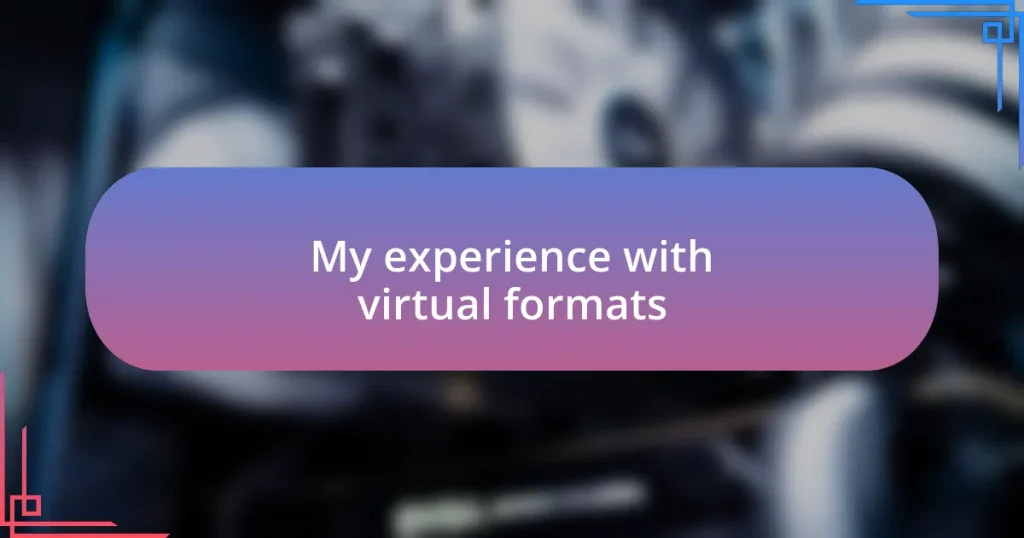Key takeaways:
- Virtual formats enhance convenience and accessibility but can lead to feelings of isolation and disconnection.
- Benefits include flexibility, wider reach, cost-effectiveness, and improved focus, while challenges involve technical issues and distractions.
- Effective virtual meetings require clear agendas, engaging multimedia content, and fostering community through recognition and storytelling.
- Future trends may include the integration of AR/VR and AI tools, enhancing personalization and interactivity in virtual experiences.
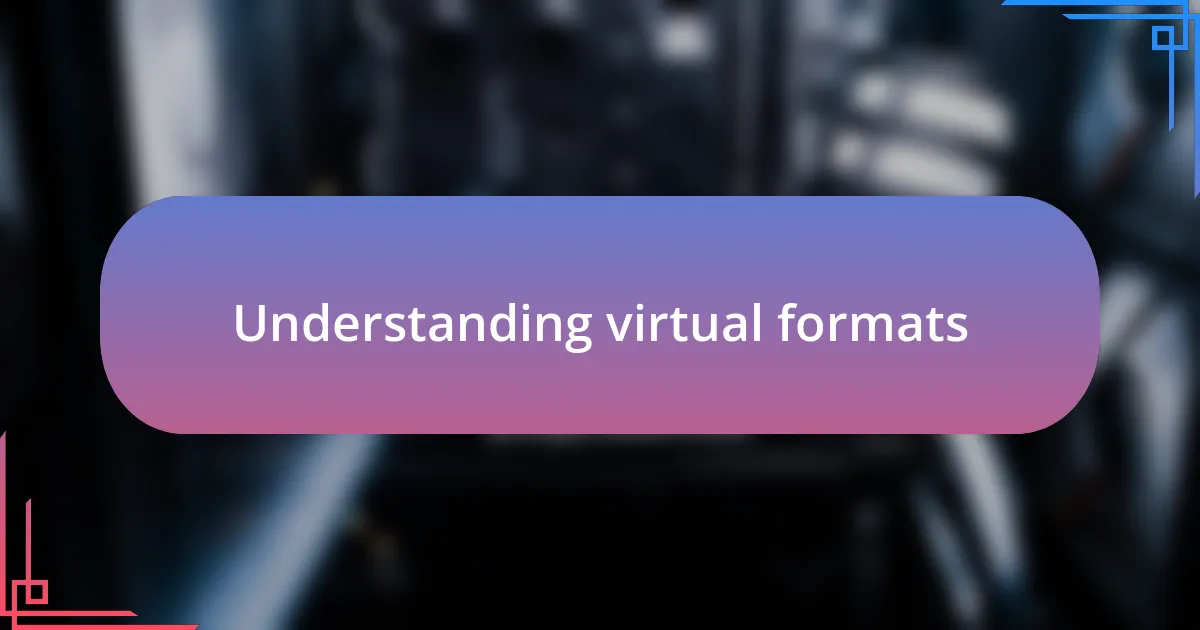
Understanding virtual formats
Virtual formats have transformed the way we connect and communicate. For instance, I remember attending a virtual conference last year where I could interact with speakers and participants from around the globe, all from my living room. It made me wonder: how would this experience compare to an in-person event?
The convenience of virtual formats has both pros and cons. While I appreciate being able to join meetings in my pajamas, I also miss the spontaneous interactions that happen naturally in physical spaces. Have you ever thought about how a simple chat over coffee can spark some of the best ideas?
Exploring different virtual formats, from webinars to online workshops, reveals their unique characteristics and capabilities. Engaging with these platforms has taught me about the importance of clear communication and active participation. It’s interesting to consider how we can adapt our interactions to make the most of these digital experiences, isn’t it?
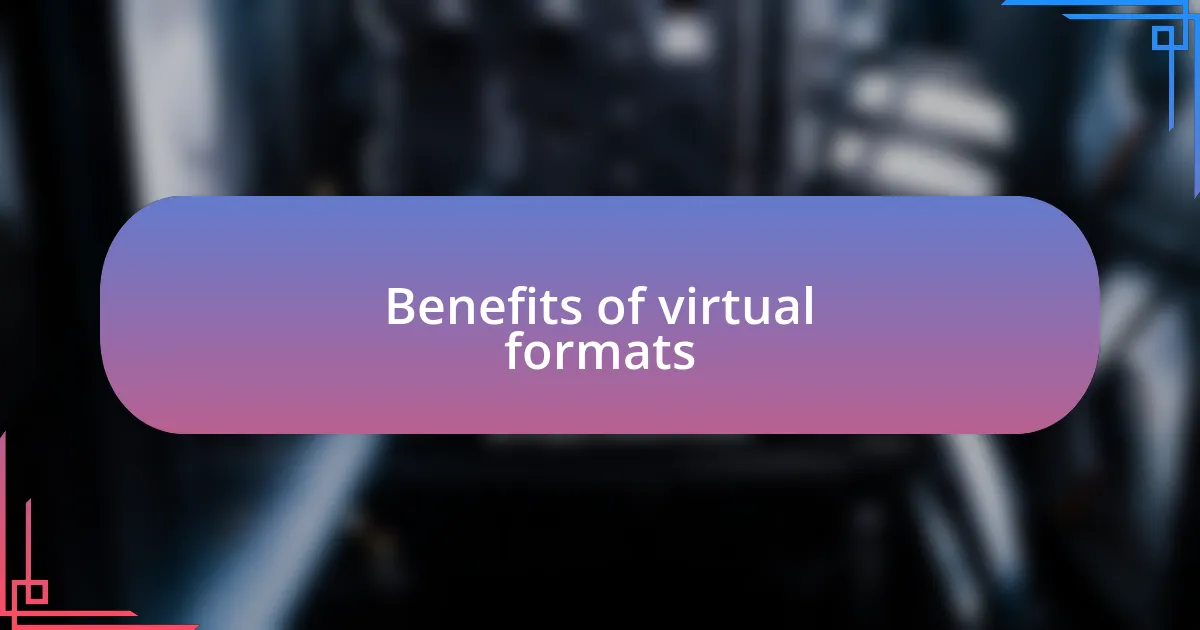
Benefits of virtual formats
The advantages of virtual formats are truly remarkable. I recall one particular online workshop where the accessibility of materials made everything feel much more interactive. Being able to revisit recorded sessions at my own pace was a game-changer, allowing me to absorb information more thoroughly than I often do in live settings.
Here are some benefits of virtual formats:
- Flexibility: I can join events whenever and wherever it’s convenient for me, eliminating travel time.
- Wider Reach: Attending sessions with people from diverse backgrounds broadened my perspective immensely.
- Cost-Effectiveness: Virtual participation often reduces expenses related to travel and accommodation, which is a huge plus for budgeting.
- Environmental Impact: Reduced travel means a lower carbon footprint, something I feel really good about.
- Improved Focus: I’ve found that in the calm of my home, I can concentrate better, avoiding the usual distractions of a crowded venue.
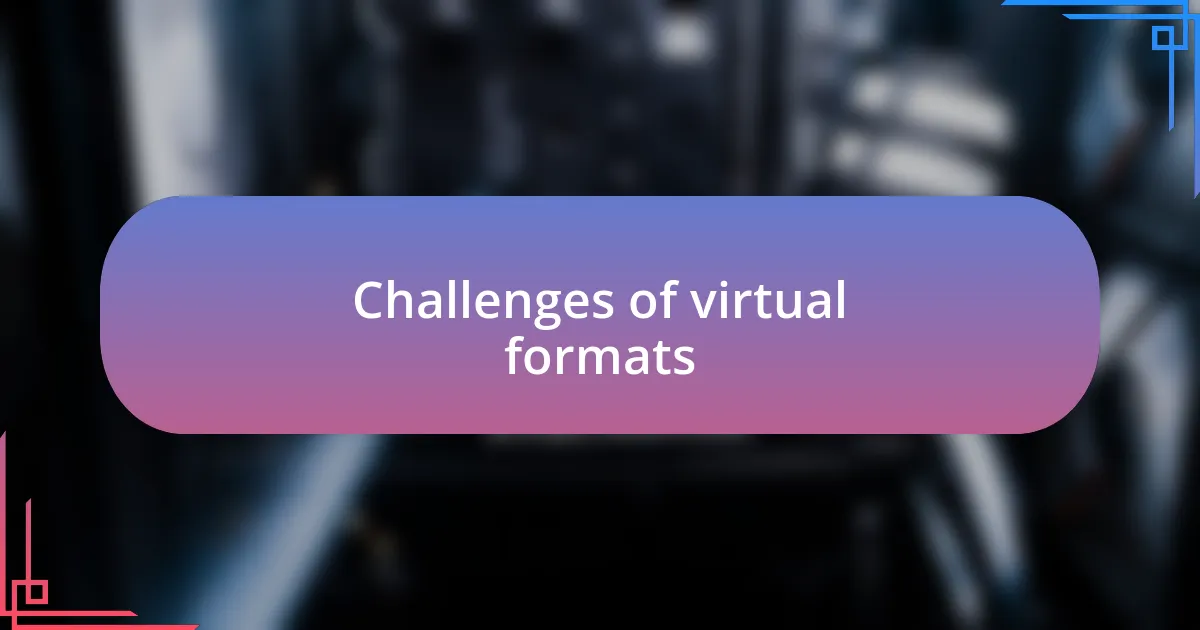
Challenges of virtual formats
Virtual formats, while beneficial, also present a unique set of challenges that can be difficult to navigate. One major issue I’ve encountered is the lack of personal interaction; I remember a conference where buzzing conversations in the break room were replaced by silence in the chat box. This absence of spontaneous engagement often makes it hard to build connections, leaving me feeling isolated even in a group setting.
Technical glitches can further complicate the experience. Just the other day, during an important webinar, my video froze mid-presentation, and I missed valuable insights while I struggled to reconnect. It’s frustrating how unreliable technology can disrupt the flow and diminish the quality of learning.
Additionally, maintaining attention can be a real test of willpower. I’ve found that when I’m participating virtually, distractions like my phone or household tasks are often just a click away. It’s an ongoing challenge that requires conscious effort to stay focused and engaged, sometimes leading to a sense of exhaustion rather than excitement.
| Challenge | Impact |
|---|---|
| Isolation | Diminished networking opportunities; |
| Technical Issues | Disruption of learning and engagement; |
| Distractions | Lowered focus and increased fatigue; |
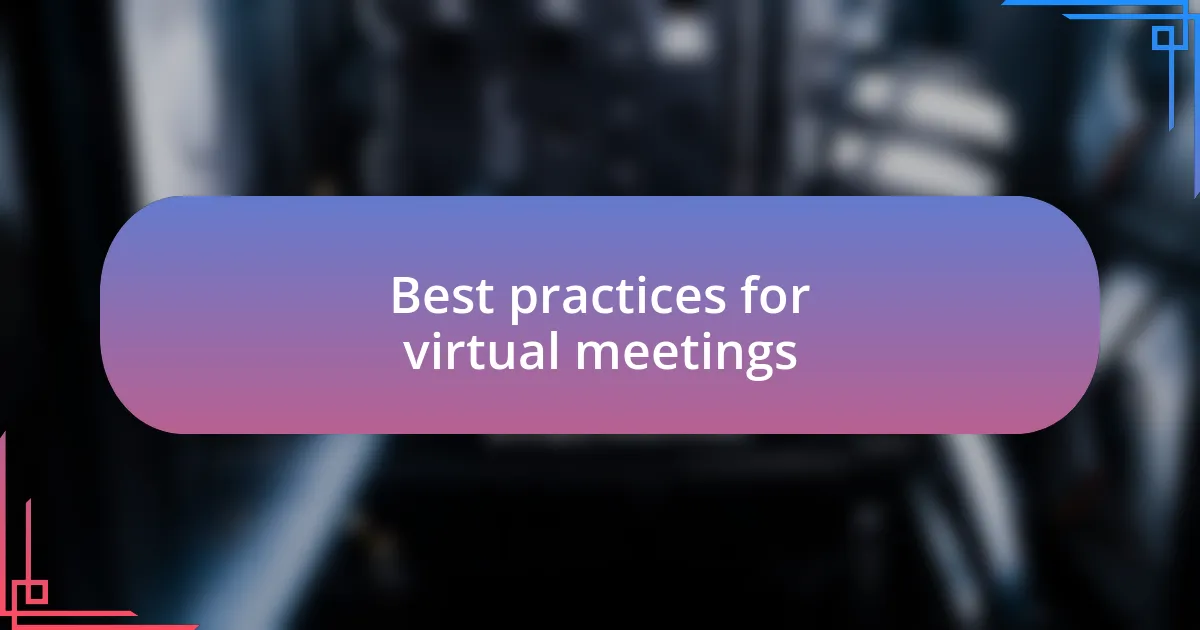
Best practices for virtual meetings
To ensure successful virtual meetings, it’s vital to create an inviting atmosphere. I often start by turning on my camera; it fosters a sense of connection that’s usually missing in these formats. Have you noticed how seeing faces, even through a screen, can make conversations feel much more engaging?
Preparation is another key aspect. Before one of my recent meetings, I ensured our agenda was clear and shared ahead of time. I found that it not only set expectations but also encouraged participants to come ready to contribute. Isn’t it amazing how a little planning can lead to more productive discussions?
Lastly, I like to incorporate breaks during longer sessions. I’ve learned that a quick five-minute pause can rejuvenate everyone’s focus and energy. During one session, after a short break, the renewed enthusiasm was palpable; it’s as if we were all refreshed and ready to dive back in. Wouldn’t incorporating small breaks enhance everyone’s experience?
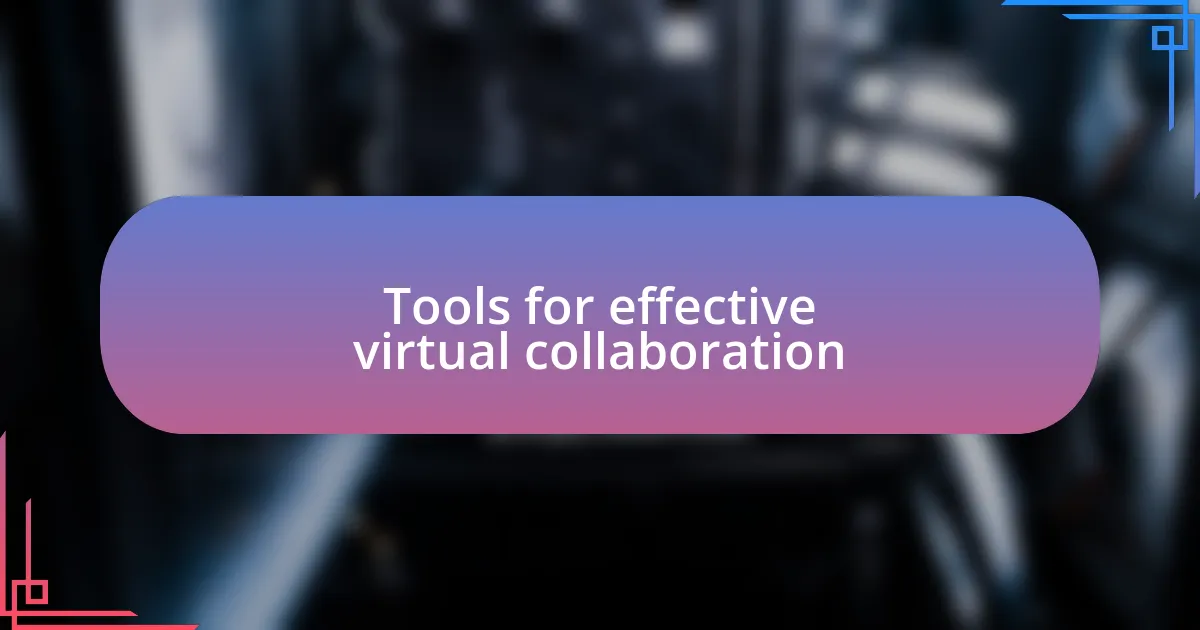
Tools for effective virtual collaboration
When it comes to tools for effective virtual collaboration, I find that a reliable platform like Zoom or Microsoft Teams is essential. In my experience, these tools not only allow for seamless communication but also include features like screen sharing and breakout rooms, which can transform a tedious meeting into an interactive session. Have you ever felt the energy shift when breaking into smaller groups to brainstorm? I definitely have!
Another tool I’ve embraced is Trello for task management. This platform has been invaluable for keeping our projects on track. I remember using it recently with my team, and seeing our tasks visually organized made it so much easier to understand everyone’s roles and responsibilities. It’s fascinating how a little visual clarity can boost accountability and make deadlines feel more achievable, right?
Lastly, I can’t stress enough the importance of collaborative document editing tools like Google Docs. I’ve experienced the power of real-time collaboration; it’s like having a brainstorming session but without the geographic barriers. One time, while working with colleagues spread across different time zones, we managed to put together a significant report in just a few hours, each of us contributing our insights as they flowed. Isn’t it amazing how technology allows us to work together, no matter where we are?
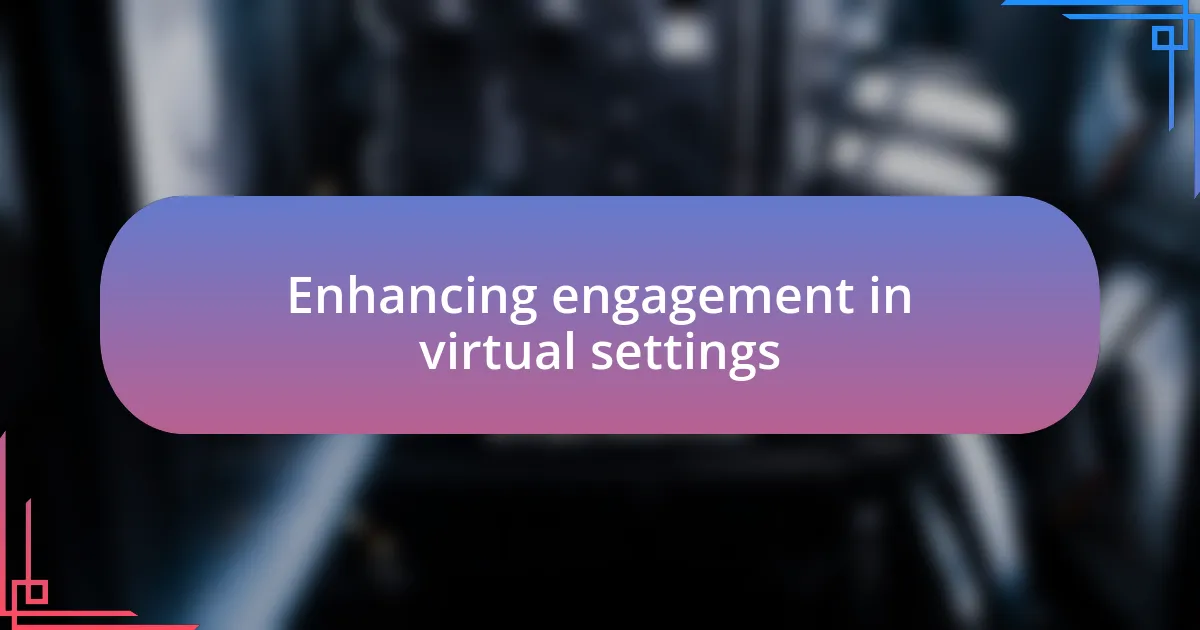
Enhancing engagement in virtual settings
Engaging participants in a virtual setting requires a bit of creativity, and I’ve found that incorporating multimedia can be a game changer. During a recent webinar, I decided to use a mix of videos and interactive polls to keep my audience on their toes. I could sense the shift in energy; when people saw their opinions reflected in real-time results, you could almost feel their engagement levels rising. Isn’t it fascinating how a simple poll can transform a passive audience into active participants?
Another tactic that has proven effective for me is storytelling. I recall sharing a personal journey during an online workshop, which not only humanized the experience but also encouraged attendees to share their stories. The immediate responses I received reminded me that vulnerability creates connection. Don’t you think that bringing a personal touch can make a world of difference in how people relate to the content?
Finally, fostering a sense of community is crucial. In one virtual meeting, I initiated a “shout-out” session where team members recognized each other’s contributions. This really impacted morale. Watching everyone’s face light up when they received acknowledgment was rewarding. Do you agree that these small gestures can make a significant impact on engagement and collaboration in virtual environments?
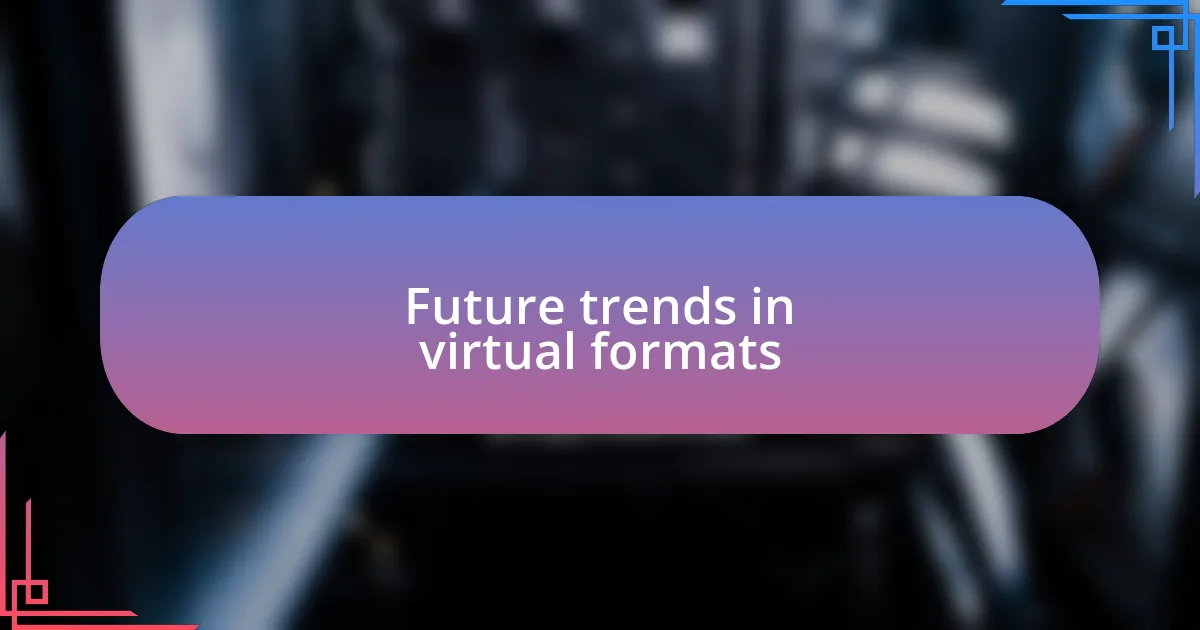
Future trends in virtual formats
In the realm of virtual formats, I see the rise of augmented reality (AR) and virtual reality (VR) as transformative forces. The first time I attended a hybrid event utilizing VR technology, I felt transported into another world. The immersive experience allowed me to interact with content and speakers in ways that transcended traditional formats. How exhilarating would it be to network with professionals in a realistic yet virtual space, breaking the limitations of geographical boundaries?
Moreover, automation tools for organizing and moderating virtual meetings are becoming increasingly sophisticated. I remember a recent online panel where AI-driven software managed questions from the audience seamlessly, allowing the speakers to focus fully on the discussion. It made me think: could the future of virtual interactions hinge on these intelligent tools that enhance efficiency while maintaining the human touch?
As we trend towards more personalized experiences, data analytics will play a crucial role in shaping virtual formats. Reflecting on a data-driven virtual conference I participated in, I noticed how tailored content recommendations significantly improved my engagement. Isn’t it fascinating to consider that in the future, virtual formats might evolve to anticipate our needs, delivering experiences uniquely suited to us?











